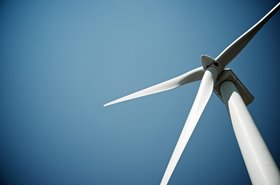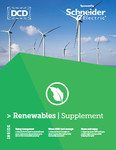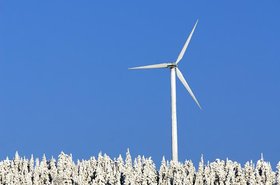Equinix has set targets to move towards being carbon neutral, days after it was criticized by Greenpeace for not having "credible timelines" on renewable energy use.
The world's largest retail colocation provider has promised to reduce its own emissions, and those created by its electricity supply, by 50 percent before 2030. To achieve this, it aims to reach 100 percent renewable energy by 2030, fulfilling a commitment it made in 2015 when it joined the RE100 group of companies that have committed to eventually use all renewable energy.
Scope for improvement
Technically, Equinix has already committed to using 100 percent renewable energy by 2030, at least in Europe, as it is part of the Climate Neutral Data Center Pact, under which European providers including Equinix have promised to be carbon neutral by 2030. This was negotiated in part by Equinix UK managing director Michael Winterson, through the European Data Center Association.
As well as moving to renewables, Equinix will push for energy efficiency savings, cut refrigerant loss, and phase out refrigerants with high global warming potential (GWP). It will also look into replacing diesel generators used for backup.
Although Equinix claims this is a first for the data center industry, rival Digital Realty might claim precedence, as it promised in 2020 to reduce its emissions by 66 percent by 2030. Both companies' targets include Scope 1 (their own emissions) and Scope 2 (those produced in generating the electricity they use). Digital is working from a 2018 baseline, while Equinix is looking at a 2019 baseline.
More significantly, Digital Realty has made a promise to cut the more tricky Scope 3 emissions, which come from its supply chain and are produced by customers and partners. This would include major sources of emissions such as the concrete used in data center construction. Digital says it will cut its Scope 3 (third party) emissions by 24 percent by 2030.
While Equinix has not set a global target for all of its Scope 3 emissions, it is addressing the topic. The company will require that suppliers responsible for 66 percent of its Scope 3 (supply chain) emissions must set their own science-based targets by 2025. It has also promised to address fuel and energy-related activities (FERA) activities that deliver power to its sites, and will reduce those Scope 3 emissions by 50 percent before 2030.
Equinix may have philosophical reasons for not setting a global Scope 3 target. In a January 2021 interview, Winterson told DCD that Scope 3 cuts may not be needed, if everyone cuts their Scope 1 and 2 emissions to zero - as Europe is hoping to achieve: "Philosophically, Scope 3 shouldn’t matter if you have an entirely climate-neutral continent. If I buy concrete it should already be climate neutral. Scope 3 should disappear."
Equinix’s targets have been approved by the Science-Based Target initiative (SBTi), and follow an achievement of reaching 90 percent renewable energy from 2018 to 2020.
Equinix has also got into green finance, issuing $3.7 billion in green bonds toward environmentally sustainable projects, including green buildings, renewable energy, energy and water efficiency, waste, and clean transportation. In 2020 it invested $14 million in a global Energy Efficiency Center of Excellence
Equinix is also a founding member of the Renewable Energy Buyers Alliance (REBA).
Meanwhile, Microsoft has promised to reach net-zero by 2030, in a plan which addresses Scope 1, Scope 2, and Scope 3. However, Microsoft has tighter control of its own data centers, which run applications and cloud infrastructure that are used by customers emissions (from its whole supply chain).
More from DCD
-

Reaching net-zero in a carbon-neutral continent
Europe hopes to eliminate its net emissions by 2050, while the US is still getting its act together. Data centers want to lead the way
-

The Renewables Supplement
What data center operators should know about renewable energy
-

When 100 percent isn’t enough
What can data center operators learn from Google when it comes to renewable energy?

